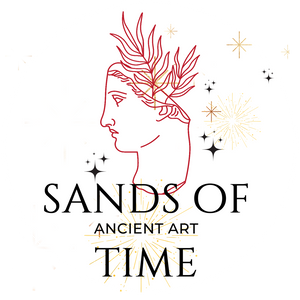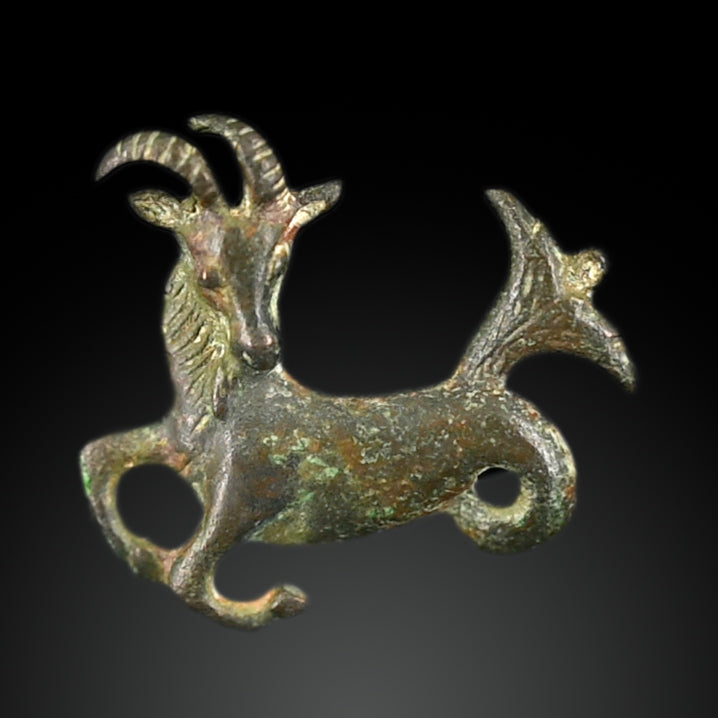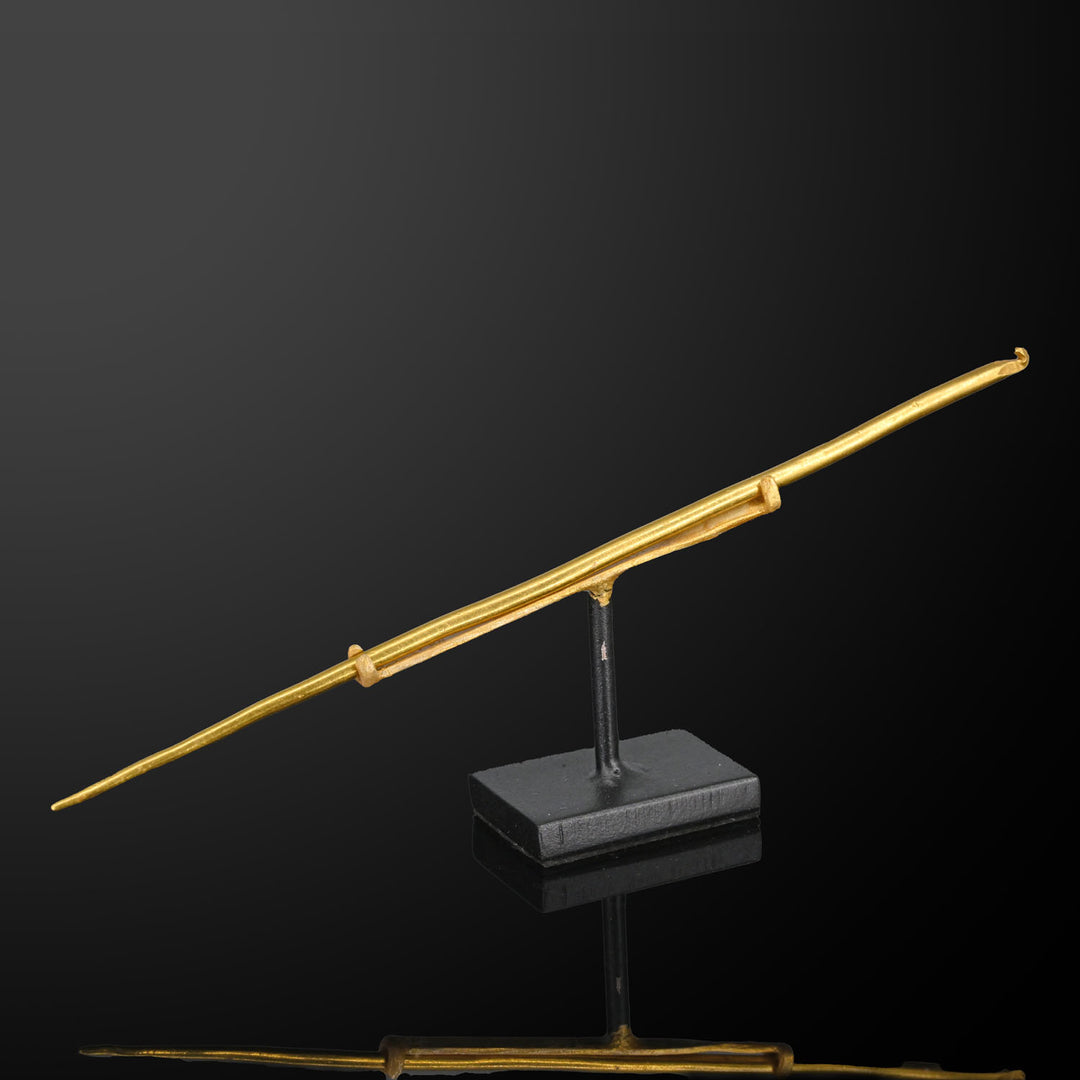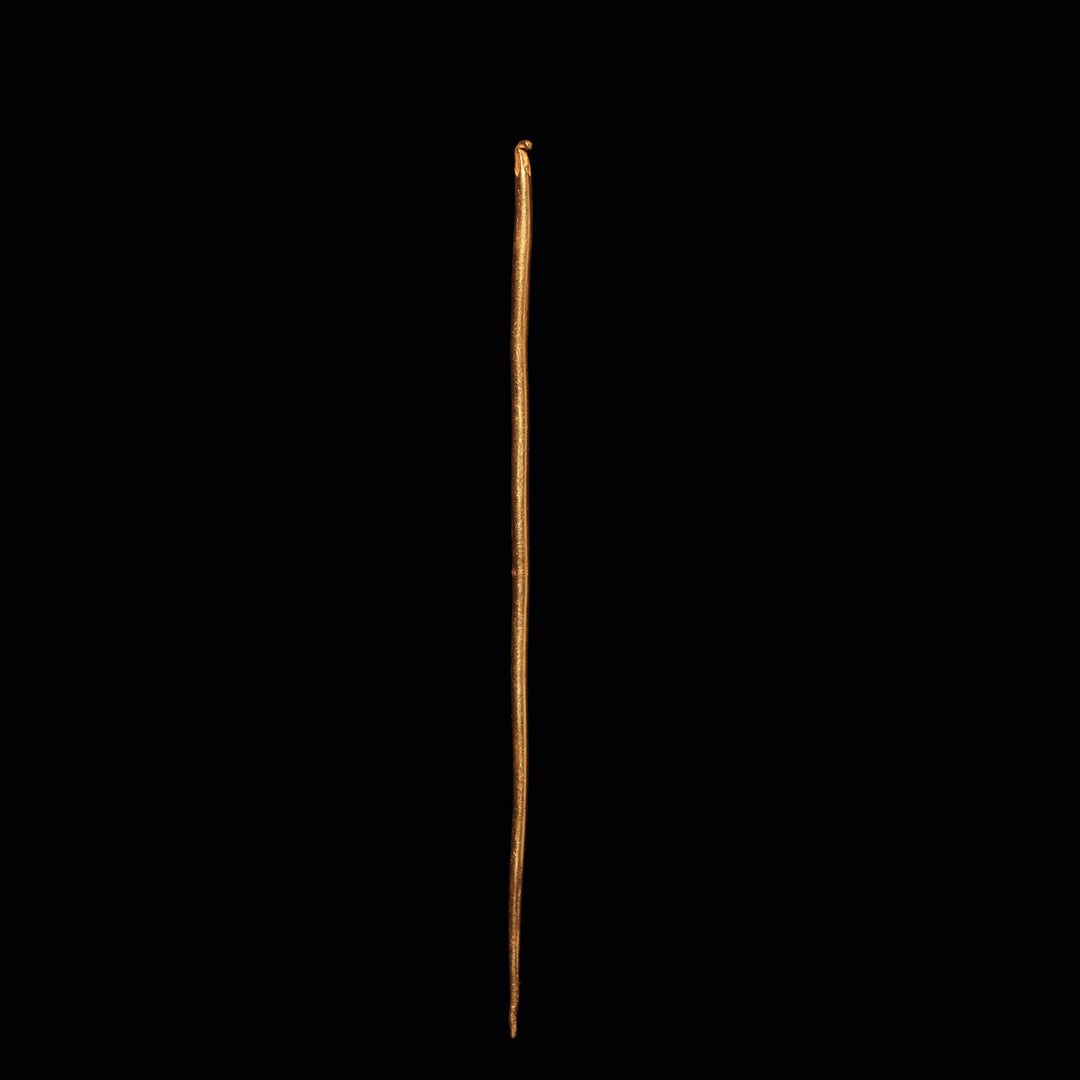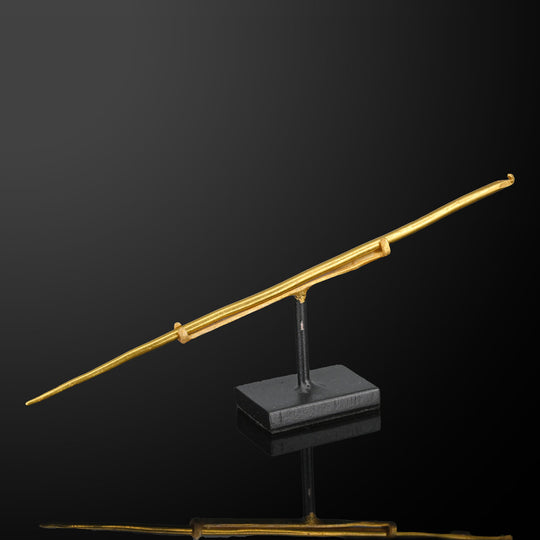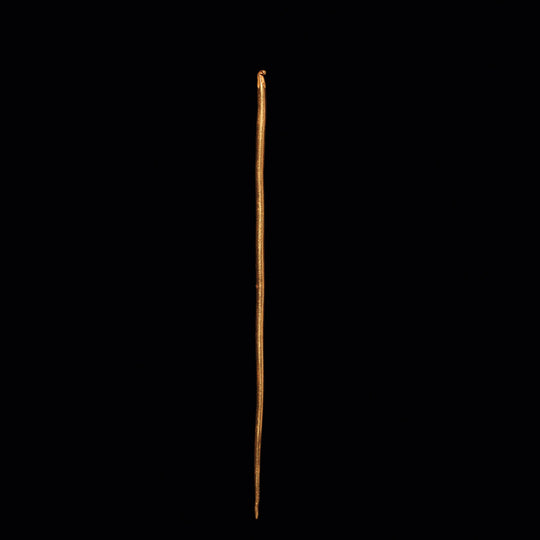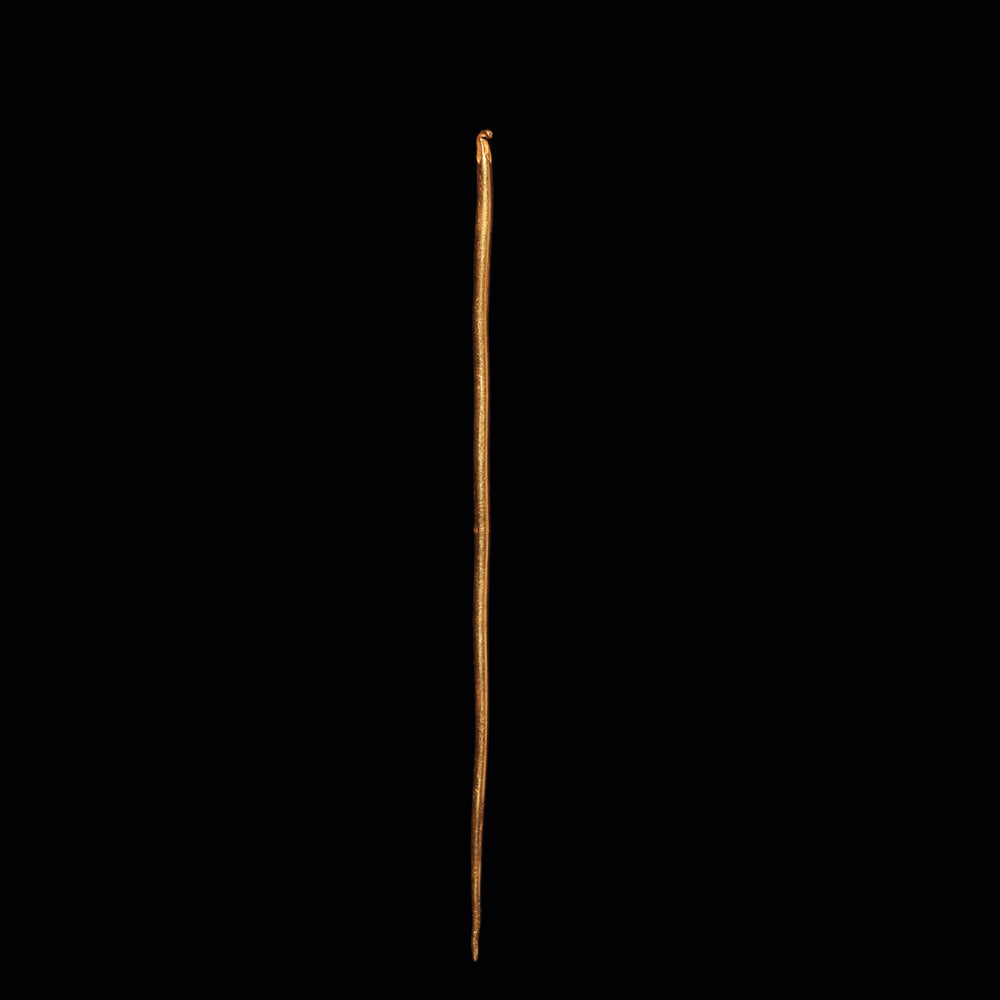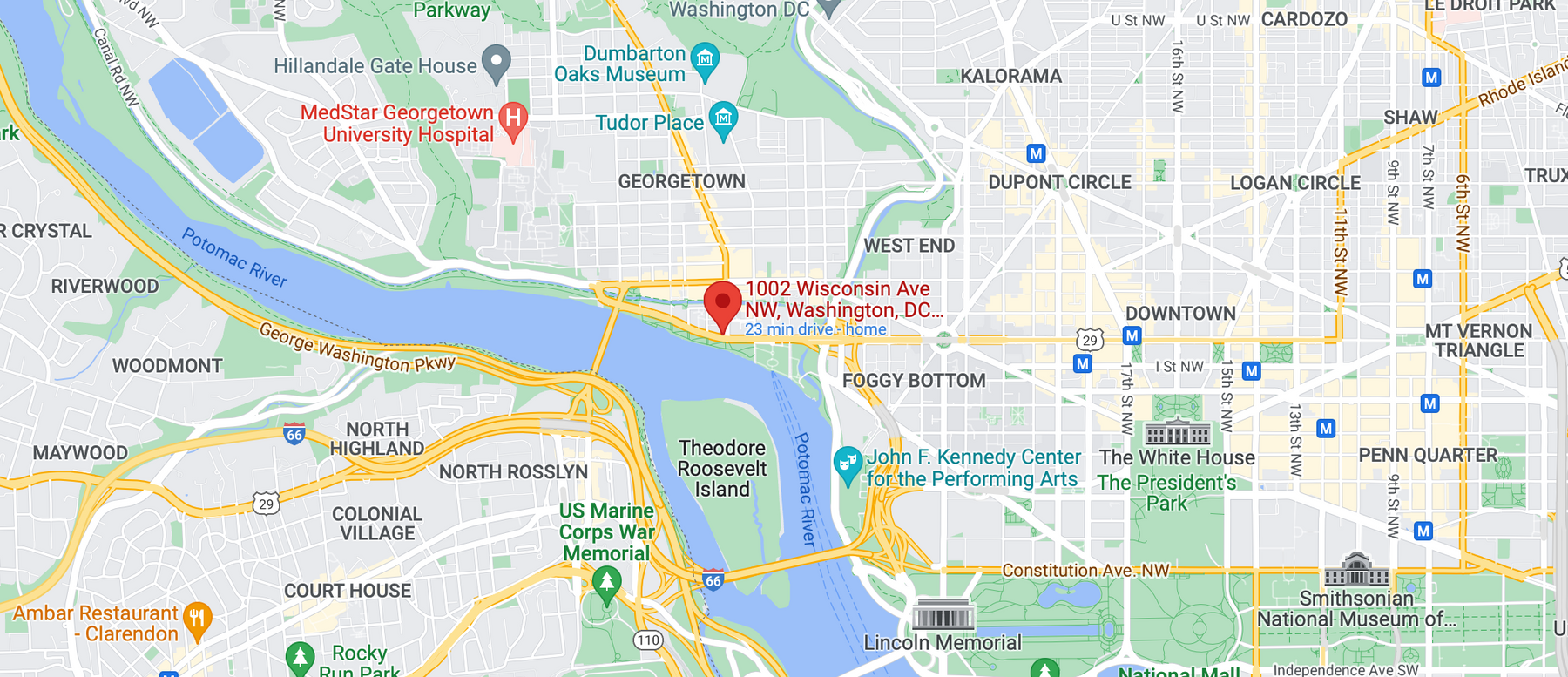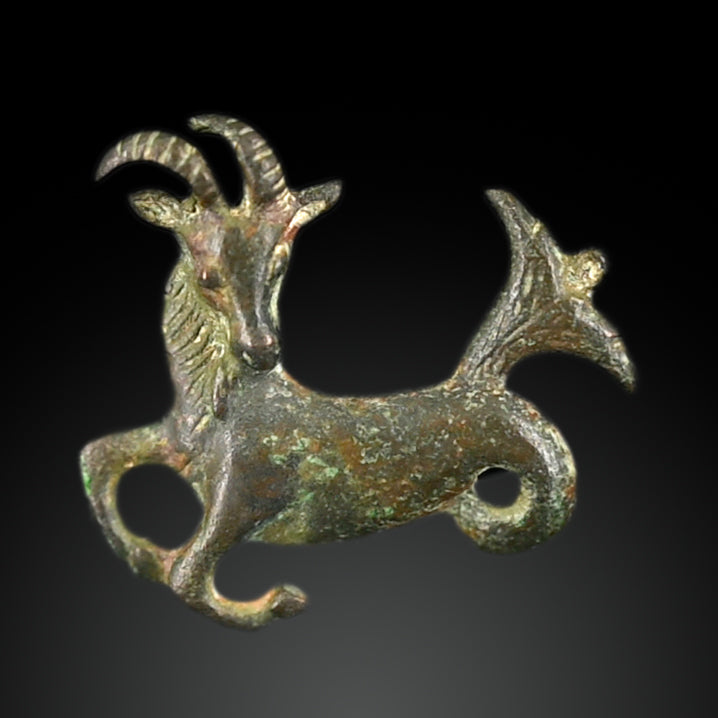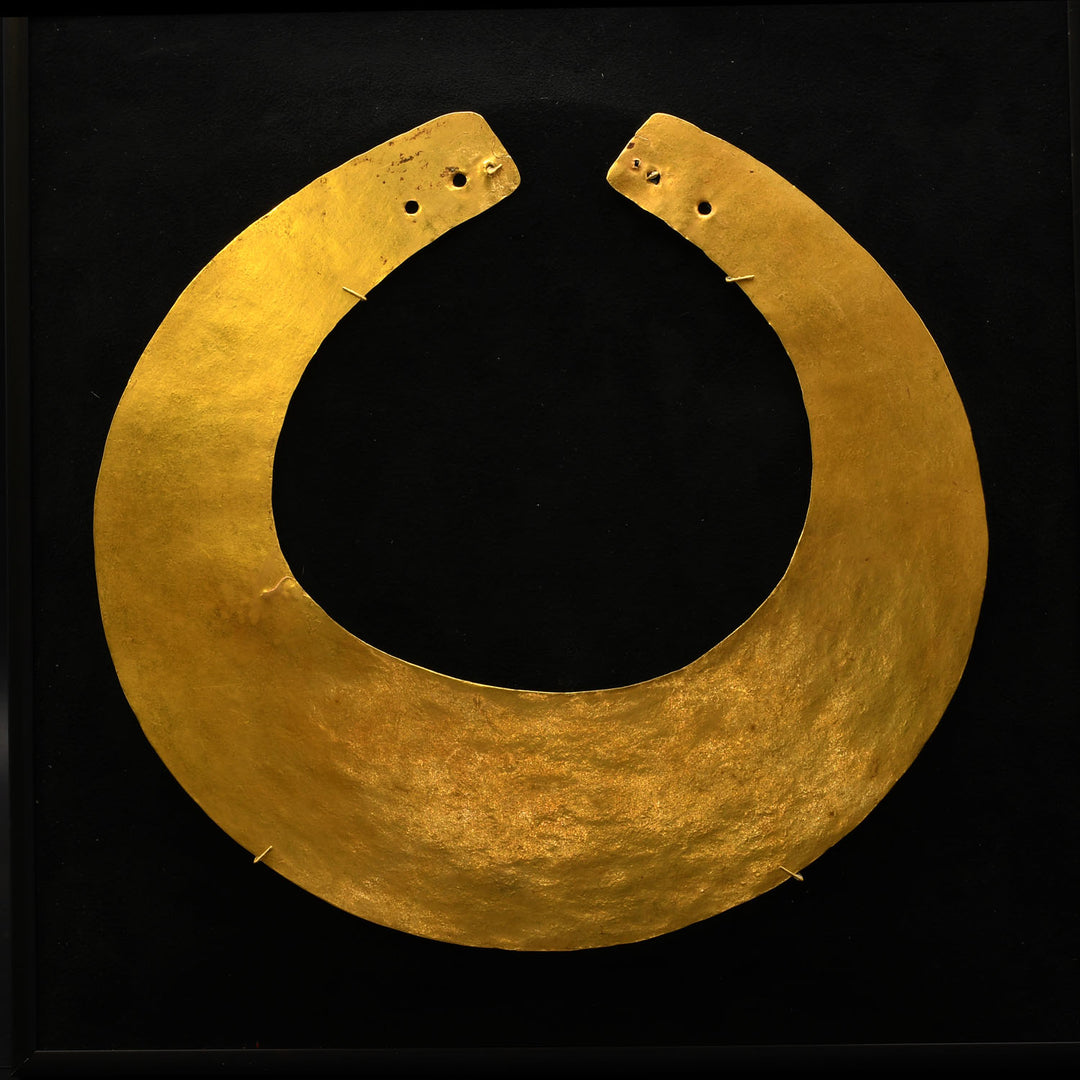A rare Roman Gold Medical Curette, Late Roman - Byzantine Period, ca. 3rd - 8th century CE
GJ2303b
- This object qualifies for free USA shipping and a flat rate fee of $60 if shipping internationally.
This fine, solid gold medical instrument consists of a long thin handle with a small hook on one end, with the other tapering to a point for use as a probe. The curette was used in ancient times for scraping or debriding biological tissue or debris in a biopsy, excision, or cleaning procedure.
The use of gold medical instruments in ancient times is known, but quite rare, and in an age where inconsistent or ineffective use of antiseptics and anesthetics made surgery a treatment of last resort, impressive instruments would have inspired much confidence.
Early physicians recorded the use of gold instruments for particular treatments: Hippocrates (460 - 370 BCE) binds the teeth together in fracture of the jaw with a gold wire (iii. 174); cf. Paul, VI. xcii. Theodorus Priscianus (4th century CE) recommended a cautery of gold to stop hemorrhage from the throat (Logicus, xxii). Mesue ((circa 777–857) recommends a heated scalpel of gold to excise the tonsil. Avicenna (980 - 1037) lets out the pustules of smallpox with a golden probe. Albucasis (936 - 1013) recommends burning the roots of hairs in trichiasis with a probe of gold, while Avenzoar (1091-1162) speaks of a golden probe for applying salve to the eye and for separating adhesion of the eye to the lid. Bibliography: Mills, John Stewart (1907) “Surgical Instruments in Greek and Roman Times”, Oxford: Clarendon Press. Lawrence J. Bliquez, The Tools of Asclepius: Surgical Instruments in Greek and Roman Times. Studies in ancient medicine, 43. Leiden; Boston: Brill, 2014.
Medium: Gold
Dimensions: Length: 4 1/2 inches (11.43 cm)
Condition: Intact and in very good condition overall, presented on a museum-quality custom mount (shown).
Provenance: Private NYC collection, acquired from the NYC trade in 2014.
Sands of Time provides a lifetime, unconditional guarantee of authenticity and provenance. Every object you purchase from us is accompanied by a Certificate of Authenticity, stating culture, provenance, and age.
Furthermore, we conduct due diligence to ensure the item, to the best of our knowledge, has not been illegally obtained from an excavation, architectural monument, public institution, or private property. Wherever possible, reference is made to existing collections or publications.Wherever possible, reference is made to existing collections or publications.
We ship Tuesday to Friday with FedEx and usually same day if your order is received before 2pm. Within the continental USA, packing, shipping and insurance is free. Depending on size and destination, delivery times range from one to five business days.
For overseas shipments we charge a small flat rate which includes packing, preparation of all customs paperwork, insurance and carrier fees in compliance with all USA and International customs requirements. Overseas shipments are sent using either USPS Priority Mail or FedEx but contact us if you have a shipping preference. International customers are responsible for all duties and taxes.
